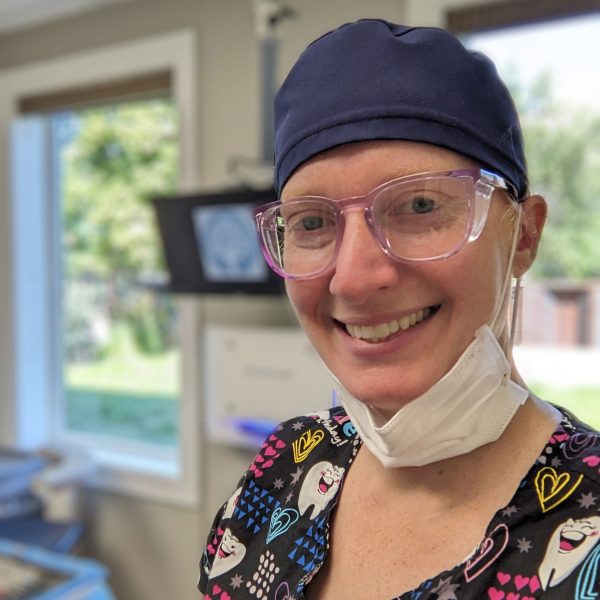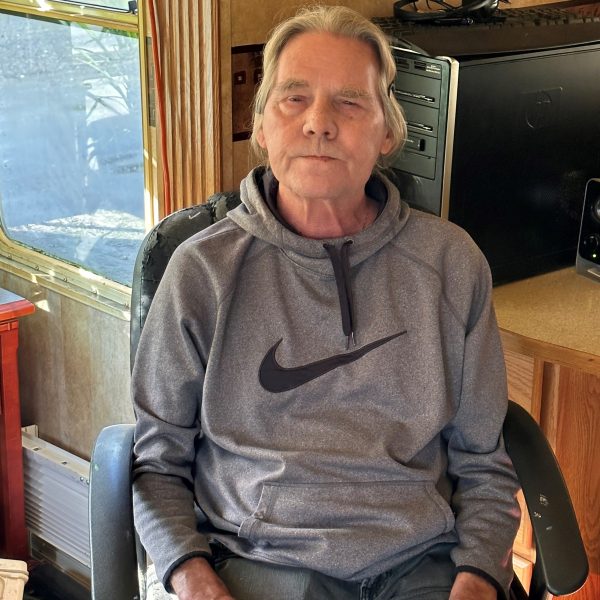DoodleMaths

Now that we are over a month into the 2023 school year, most parents probably have a pretty decent idea which subjects their children are struggling with. And as we’ve stated in previous e-bulletins, the earlier that you can identify and work on the subjects that your child struggles with, the more likely they are to overcome that subject matter without impacting their grades, or perhaps even more importantly, their self-esteem.
Today we are going to look at an app that is designed for students who struggle with (or simply need to review) math. DoodleMaths is a cross platform math app designed for students aged four to 14, and it also provides users with a variety of accessibility options such as audio dictation and colored overlays.
“I Can Hear So Much Better,” New Hearing Aids Helps Rita Hear Customers

Rita works as a cashier in Kelowna, and she has hearing loss making it hard to interact with customers.
When she was looking for hearing aids, she was referred to WorkBC Assistive Technology Services for financial assistance for the hearing aids she needed for work. Rita applied to WorkBC Assistive Technology Services and was quickly approved, and was able to get the much-needed hearing aids.
Rediscover Sound, Independence, and Affordability With Neil Squire Hearing Solutions in Burnaby

These are the universal experiences that invigorate the mind and soul.
The endless joy in hearing your children laugh, noticing the first songbird mark the morning sunrise, or listening to your favourite piece of music.
But what if the freedom afforded by proper hearing was suddenly gone?
SplashLearn

We covered plenty of learning apps in the past, but here we are again! The truth is there are SO MANY learning apps out there, and what works best for one student may not work for the other. The learning app that we are looking at today has been around for over a decade, and it’s currently topping a lot of “must have” lists around the internet.
SplashLearn is an education app that was designed for students from pre-K to grade 5. With over 4,000 learning games that cover math, reading, and writing, your child will have lots of unique learning opportunities. But, you won’t be finding yourself struggling to figure out what’s next, because SplashLearn offers daily learning plans. The app also has users set up a “profile” for their child during the initial set up, so you’ll be properly guided through this experience from the very start.
“Communication is Much Better,” New Hearing Aids Make the Difference for Amy

Amy works as a chairside assistant and sterilization tech in a dental clinic in Grand Forks.
“My hearing is impaired,” she explains. “Without hearing aids, it is very difficult to hear instructions, communicate with patients, and understand what is required of me.”
BeforeSunset: A Cutting-Edge Productivity App

Today we are going to look at a brand-new app that takes the traditional productivity/to-do list model to the next level. First, what do we mean by a productivity/ to-do list app? The examples are many, and we’ve talked about a few at length. If you haven’t already done so, go ahead and check out Todoist or Microsoft To Do to see an example of what those apps look like. Simply put, these apps are designed to digitize and organize your daily tasks by creating prompts, sending reminders, and connecting your tasks to your calendar.
“It Really Opened up Things for Me,” Assistive Technology Helps Rob in the Job Search

Rob has been looking for work as a writer. However, he was having troubles in the job search process as his computer wasn’t very usable, and he didn’t have the right software to allow him to navigate his computer very easily — he is blind and needs a screen reader to use a computer.
“[The computer] was on its last legs, basically after 15 minutes it would overheat and shut down,” he explains. “Also, the fact that the screen reader program I was using called JAWS, I only had it in the demo version, so even if the computer lasted an hour before overheating, the JAWS would stop talking after 40 minutes, and I would have to restart it.”
All of this made it very difficult to browse online job boards, or to even apply to jobs.
Using AI as AT: The Basics

Artificial intelligence (AI) is being used more and more every day to power all sorts of technology, including assistive technology (AT). And while this technology already serves as the backbone of a variety of apps and features that you already use, such as text-to-speech, speech recognition, AI assistants such as Siri, etc., there is another way of using AI that you may not be aware of. Today we are going to talk about AI chat bots, and we’re going to discuss some of the ways in which these open-ended tools could be used as assistive technology.
“I Am Able to Hear My Clients More Clearly,” WorkBC Assistive Technology Services Helps Sheila in the Workplace

Sheila’s job with an insurance company has her talking on the phone a lot. However, she began to notice she was having difficulty hearing clients on the phone.
“We service all of BC from our office in Kelowna, with the majority of work completed over the phone,” she says. “A couple of years ago I realized I was losing some of my hearing, and needless to say, this impacted my job tremendously as I was not able to hear the full conversation without a lot of ‘pardon me’ and ‘could you repeat that.’ Not only was this embarrassing, but it was taking me longer to complete a conversation.”
Essayist: Essay-Writing Made Easy

For many students, essay writing is the most difficult and demanding type of writing they will ever do. This is due to a number of factors, but most students would agree that it’s the rigid structure of the document as well as the requirements for accurately cited references that proves to be especially difficult. For students with learning disabilities, this process can be particularly daunting, since there are so many steps and processes to follow, and for students with mobility challenges who rely heavily on speech to text, having to worry about properly formatted citations could mean hours and hours of extra work.
Essayist is an essay-writing app that is designed to allow students to focus on content rather than format. The app is available for iOS only, but there are Android-based alternatives available.



